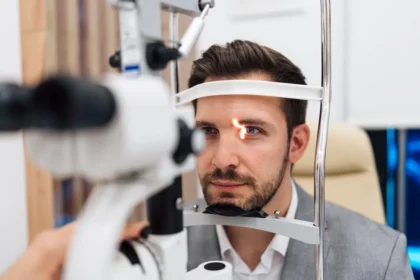Temporomandibular joint (TMJ) dysfunction refers to disorders that affect the jaw joint and surrounding muscles responsible for movement. This condition can cause pain, stiffness, and reduced range of motion, impacting daily activities such as chewing, speaking, and yawning. Understanding the causes, symptoms, and available treatments is a valuable first step in effectively managing TMJ dysfunction.
What Is TMJ?
The temporomandibular joint connects the lower jaw (mandible) to the skull, specifically at the temporal bone on each side of the face. This joint enables specific key movements, such as opening and closing the mouth. TMJ dysfunction occurs when the temporomandibular joint or the surrounding muscles fail to function correctly, resulting in discomfort and limitations in movement.
What Causes It?
This condition can arise from various factors. Common contributors include:
- Jaw injury: Trauma, such as a blow to the jaw, can damage the joint or its surrounding structures.
- Teeth misalignment: Improper alignment of the teeth can place excessive stress on the joint.
- Bruxism: Teeth grinding or clenching, particularly during sleep, may strain the joint and muscles.
- Arthritis: Conditions such as osteoarthritis or rheumatoid arthritis can affect the jaw joint’s health.
Understanding the root cause helps develop an effective treatment plan tailored to the patient’s specific needs.
What Are the Symptoms?
The symptoms of TMJ dysfunction can vary from mild discomfort to more severe problems. Common signs include jaw pain or tenderness, especially when opening or closing the mouth. Patients may report difficulty or discomfort while chewing, along with a clicking or popping sound in the joint.
Other symptoms include headaches, earaches, and jaw stiffness. Some individuals may experience a locking sensation, which temporarily prevents the mouth from fully opening or closing. Consulting a specialist helps diagnose this condition and provides treatment options.
How Is It Diagnosed?
Diagnosing this condition typically begins with a comprehensive dental evaluation. Dentists often conduct a physical examination of the jaw to check for pain, tenderness, or movement issues. Imaging tests, such as X-rays or MRI scans, may be used to assess the joint and surrounding structures for signs of damage or misalignment. Patient history plays a role in diagnosis, as understanding symptoms and contributing factors, such as bruxism or jaw injuries, enables dental professionals to identify the condition accurately.
What Are the Treatment Options?
Treatment for TMJ dysfunction is tailored to the individual, based on the severity of the condition and the underlying causes.
- Night Guard: A common approach involves the use of a night guard. This dental device is designed to prevent teeth grinding or clenching during sleep, thereby alleviating stress on the temporomandibular joint.
- Medications: Certain medications may be recommended for pain relief and inflammation reduction. Nonsteroidal anti-inflammatory drugs (NSAIDs), muscle relaxants, or other pharmaceuticals may be prescribed depending on the patient’s symptoms.
- Surgery: For severe cases of TMJ dysfunction where other treatments have been ineffective, surgical intervention may be an option. Procedures range from minimally invasive options to more complex surgeries.
Schedule a Dental Appointment Today
TMJ dysfunction can significantly impact daily activities, but effective treatment options are available. Identifying the signs early and seeking professional care is key to achieving relief and improving quality of life. If you experience symptoms of TMJ dysfunction, consult with a dentist to discuss your concerns and explore tailored treatment plans. Schedule your dental appointment today to regain comfort and functionality.










